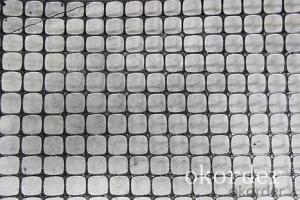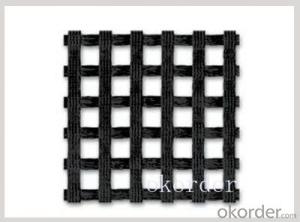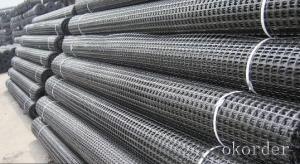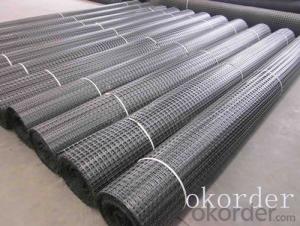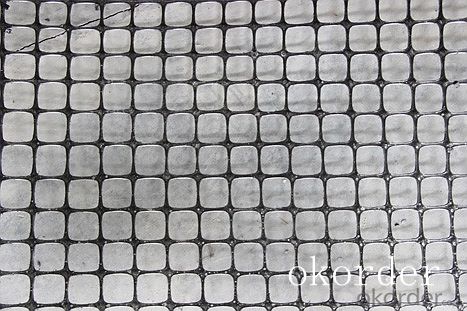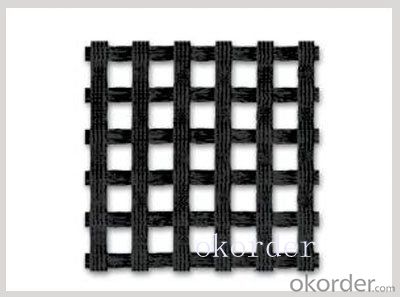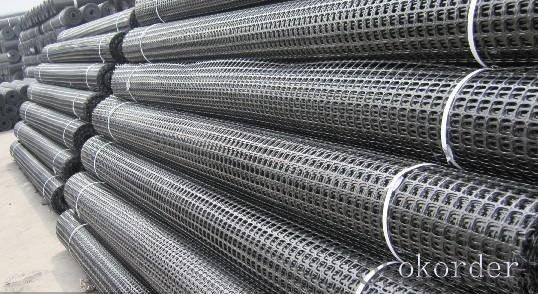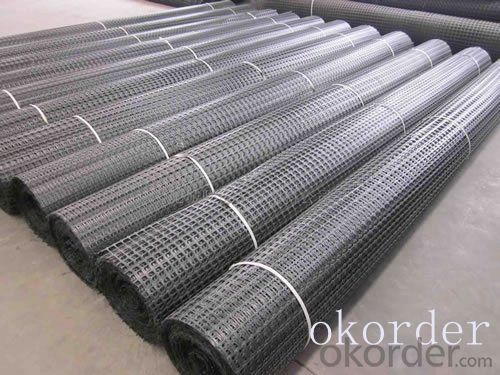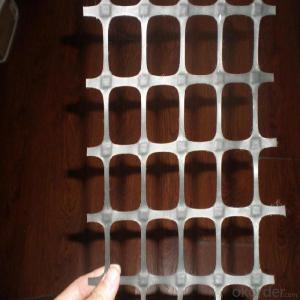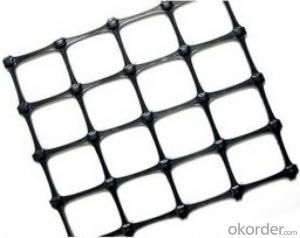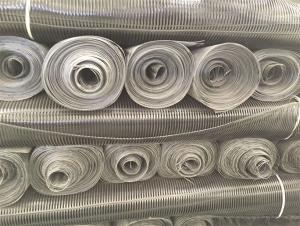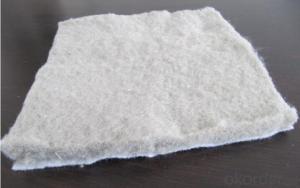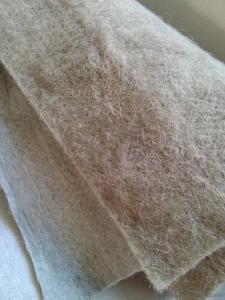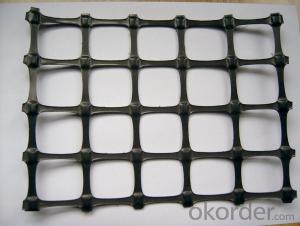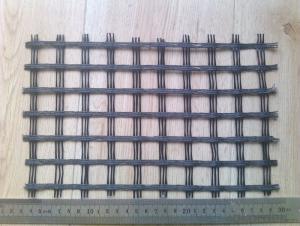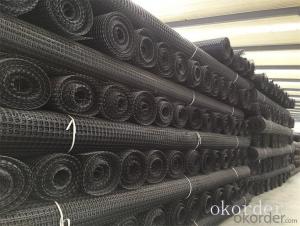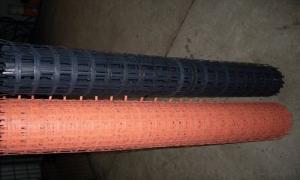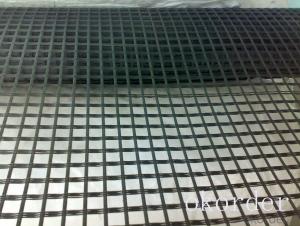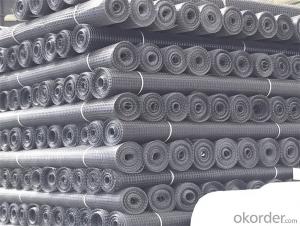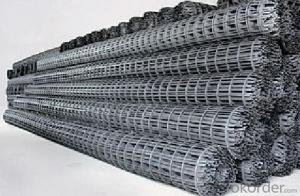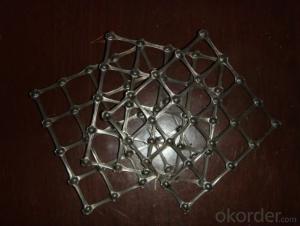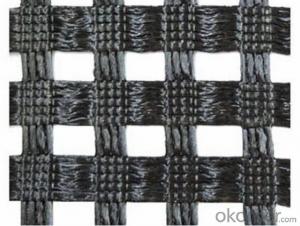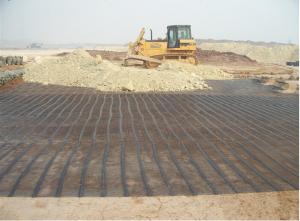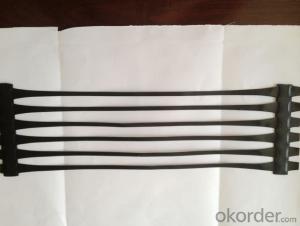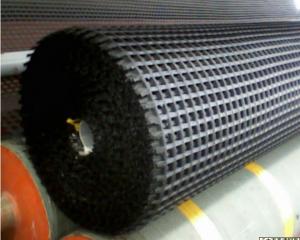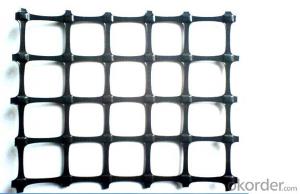Stable Access Routes High Modulus Civil Engineering Geogrids for Road Construction
- Loading Port:
- China main port
- Payment Terms:
- TT OR LC
- Min Order Qty:
- 1000 m²
- Supply Capability:
- 10000000 m²/month
OKorder Service Pledge
OKorder Financial Service
You Might Also Like
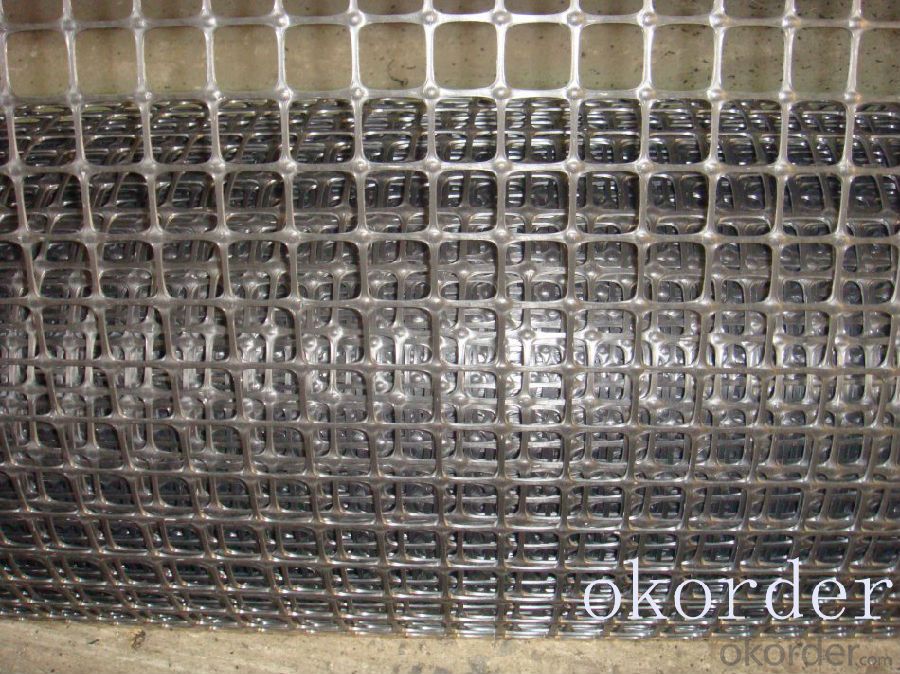
Product Introduction
A geogrid is geosynthetic material used to reinforce soils and similar materials. Geogrids are commonly used to reinforce retaining walls, as well as subbases or subsoils below roads or structures. Soils pull apart under tension. Compared to soil, geogrids are strong in tension. This fact allows them to transfer forces to a larger area of soil than would otherwise be the case.
Material:
Fiberglass
Tensile strength:
100kn
Roll Width:
3.95m
Roll length:
100 Meter
Porducts Description
Our Service
Quality assurance
1.On a regular basis or as per your request,we entrust national testing agencies to conduct quality inspections
2. Strictly in accordance with the ISO9001-2008 international quality system standard,we monitor and manage the whole process throughout production,quality testing,and measurement to ensure product quality
3. For quality-related construction delay or substandard construction(except for damage or losses due to customer’s responsibility or irresistible natural disasters),we have refunding,replacement,and repair services.We will respond to customers’ feedbacks on quality issues within 24 hours.
Packaging & Shipping
Packing: PLASTIC FILM INSIDE, AND WOVEN BAG OUTSIDE
Shipping: About 15 days after receipt the deposit
FAQ:
Q: What kind of payments does jenor support?
A: T/T, L/C, Cash are accepted.
Q: Do you charge for the samples?
A: Accordeing to our company policy, the samples are free, we only charge the freight fee. And we will return the freight fee during the next order.
Q: Can you produce according to customers' design?
A: Sure, we are professional manufacturer, OEM and ODM are both welcome.
Q: Do you have other products?
A: Yes, please check the pictures:
- Q: How do geogrids improve the performance of unpaved trails?
- Geogrids improve the performance of unpaved trails by providing reinforcement to the soil, increasing its stability and load-bearing capacity. They prevent soil erosion and rutting by distributing the applied loads more evenly, reducing the likelihood of surface deformation. Additionally, geogrids enhance the drainage capabilities of the trail, allowing for better water infiltration and reducing the chances of water accumulation and subsequent damage.
- Q: Can geogrids be used for reinforcement in railway track construction?
- Yes, geogrids can be used for reinforcement in railway track construction. Geogrids are durable and flexible materials that can effectively distribute loads and provide stability to the railway track, reducing the risk of deformation and settlement. They can enhance the overall performance and lifespan of the track, making them a suitable reinforcement option in railway track construction projects.
- Q: How do geogrids help in reducing carbon footprint in construction projects?
- Geogrids help in reducing carbon footprint in construction projects by providing reinforcement to soil structures, thereby reducing the need for additional materials like concrete or asphalt. This results in a decrease in the usage of fossil fuel-based materials and the associated carbon emissions during production and transportation. Additionally, the use of geogrids reduces the need for excavation and land disturbance, which further minimizes carbon emissions and the environmental impact of construction projects.
- Q: How do geogrids reduce the amount of fill required for construction?
- Geogrids reduce the amount of fill required for construction by providing reinforcement and stabilization to the soil, allowing for the use of less fill material. They distribute the load more evenly, improving the soil's strength and preventing excessive settlement, which ultimately reduces the amount of fill needed for a stable foundation.
- Q: Are geogrids suitable for use in high groundwater conditions?
- Yes, geogrids are suitable for use in high groundwater conditions. Geogrids are made of robust materials that are resistant to various environmental factors, including water. They have excellent drainage properties, which allow water to flow through them without compromising their structural integrity. This makes geogrids a reliable solution for reinforcement and stabilization in areas with high groundwater levels.
- Q: What is the geogrid GSJ80/HP
- 2, no long-term creep as reinforcing material, have in long-term load under the condition of deformation resistance that the creep resistance is extremely important, glass fiber does not creep, which ensure product can maintain long-term performance.3, thermal stability - the melting temperature of glass fiber above 1000 degrees Celsius, which ensures that the fiberglass geogrid in paving operations to withstand the heat stability.
- Q: What are the typical applications of geogrids?
- Geogrids are commonly used in civil engineering and construction projects for various applications such as soil stabilization, reinforcement of retaining walls, slope stabilization, pavement reinforcement, and erosion control. These grids provide strength and stability to soils, reducing the chances of soil movement and improving the overall stability and longevity of the structure.
- Q: What is the effect of confinement on geogrid performance?
- The effect of confinement on geogrid performance is generally positive. Confinement helps improve the stability and load-bearing capacity of geogrids by restraining lateral movement and enhancing soil-geogrid interaction. It prevents the geogrid from elongating or deforming under heavy loads, leading to better reinforcement and increased structural integrity. Confinement also reduces the potential for geogrids to slip or creep, improving their long-term performance and durability.
- Q: In the reinforced earth retaining wall, the geogrid is connected with the panel
- Is it a one-way geogrid? Special connecting rod
- Q: What are the long-term performance characteristics of geogrids?
- The long-term performance characteristics of geogrids include excellent resistance to chemical and biological degradation, high tensile strength, stability, and durability. Geogrids are designed to provide long-lasting reinforcement to soil structures, retaining walls, and roadways, maintaining their effectiveness and integrity over many years of use.
Send your message to us
Stable Access Routes High Modulus Civil Engineering Geogrids for Road Construction
- Loading Port:
- China main port
- Payment Terms:
- TT OR LC
- Min Order Qty:
- 1000 m²
- Supply Capability:
- 10000000 m²/month
OKorder Service Pledge
OKorder Financial Service
Similar products
Hot products
Hot Searches
Related keywords
